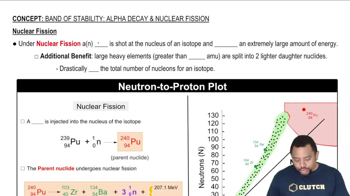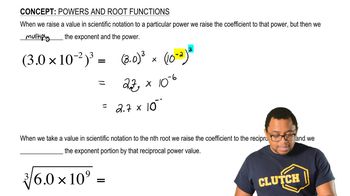Here are the essential concepts you must grasp in order to answer the question correctly.
Nuclear Fission
Nuclear fission is the process by which a heavy nucleus, such as uranium-235, splits into two smaller nuclei along with the release of energy. This reaction occurs when the nucleus absorbs a neutron, becoming unstable and breaking apart. The energy released per fission event is significant, approximately 3 * 10^-11 J for uranium-235, making it a powerful source of energy for nuclear reactors.
Recommended video:
Band of Stability: Nuclear Fission
Energy Conversion Efficiency
Energy conversion efficiency refers to the ratio of useful energy output to the total energy input, expressed as a percentage. In the context of a nuclear power plant, if the conversion efficiency is 40%, it means that only 40% of the energy released from fission is converted into electrical energy, while the rest is lost as heat or other forms of energy. This concept is crucial for calculating the actual energy available for electricity generation.
Recommended video:
Power and Energy Relationship
Power is defined as the rate at which energy is transferred or converted, measured in watts (1 watt = 1 joule/second). To find the total energy produced over a period, one can multiply power by time. In this scenario, a power output of 1000 megawatts (or 1 billion watts) over a year requires converting this power into total energy, which is essential for determining the mass of uranium-235 needed for fission.
Recommended video:
Power and Root Functions Example

 Verified step by step guidance
Verified step by step guidance

